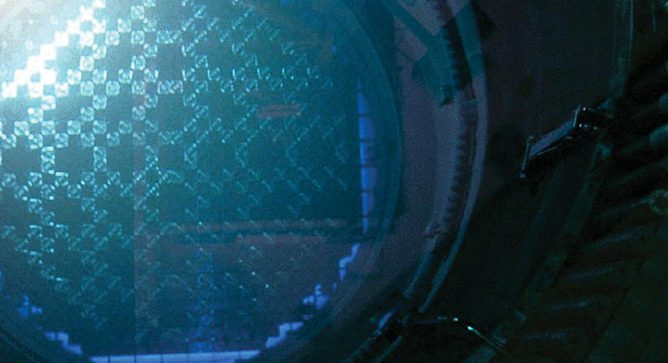News & Views, Volume 43 | Using Falcon to Develop RIA Pellet-Cladding Mechanical Interaction (PCMI) Failure Criteria
By: John Alvis
Introduction
The goal to achieve higher fuel rod burnup levels has produced considerable interest in the transient response of high burnup nuclear fuel. Several experimental programs have been initiated to generate data on the behavior of high burnup fuel under transient conditions representative of Reactivity Initiated Accidents (RIAs). A RIA is an important postulated accident for the design of Light Water Reactors (LWRs). It is considered the bounding accident for uncontrolled reactivity insertions.
The initial results from RIA-simulation tests on fuel rod segments with burnup levels above 50 GWd/tU, namely CABRI REP Na-1 (conducted in 1993) and NSRR HBO-1 (conducted in 1994), raised concerns that the licensing criteria defined in the Standard Review Plan (NUREG-0800) may be inappropriate beyond a certain level of burnup. Figure 1 is an example of a typical high burnup fuel cladding showing the oxidized and hydrided cladding of higher burnup fuel rods. Figure 2 shows the typical radial crack path in oxidized and hydrided cladding, subjected to RIA simulation tests. As a consequence of these findings, EPRI with the assistance of the Structural Integrity’s Nuclear Fuel Technology Division (formally ANATECH) and other nuclear industry members conducted an extensive review and assessment of the observed behavior of high burnup fuel under RIA conditions. The objective was to conduct a detailed analysis of the data obtained from RIA-simulation experiments and to evaluate the applicability of the data to commercial LWR fuel behavior during a Rod Ejection Accident (REA) or Control Rod Drop Accident (CRDA). The assessment included a review of the fuel segments used in the tests, the test procedures, in-pile instrumentation measurements, post-test examination results, and a detailed analytical evaluation of several key RIA-simulation tests.



